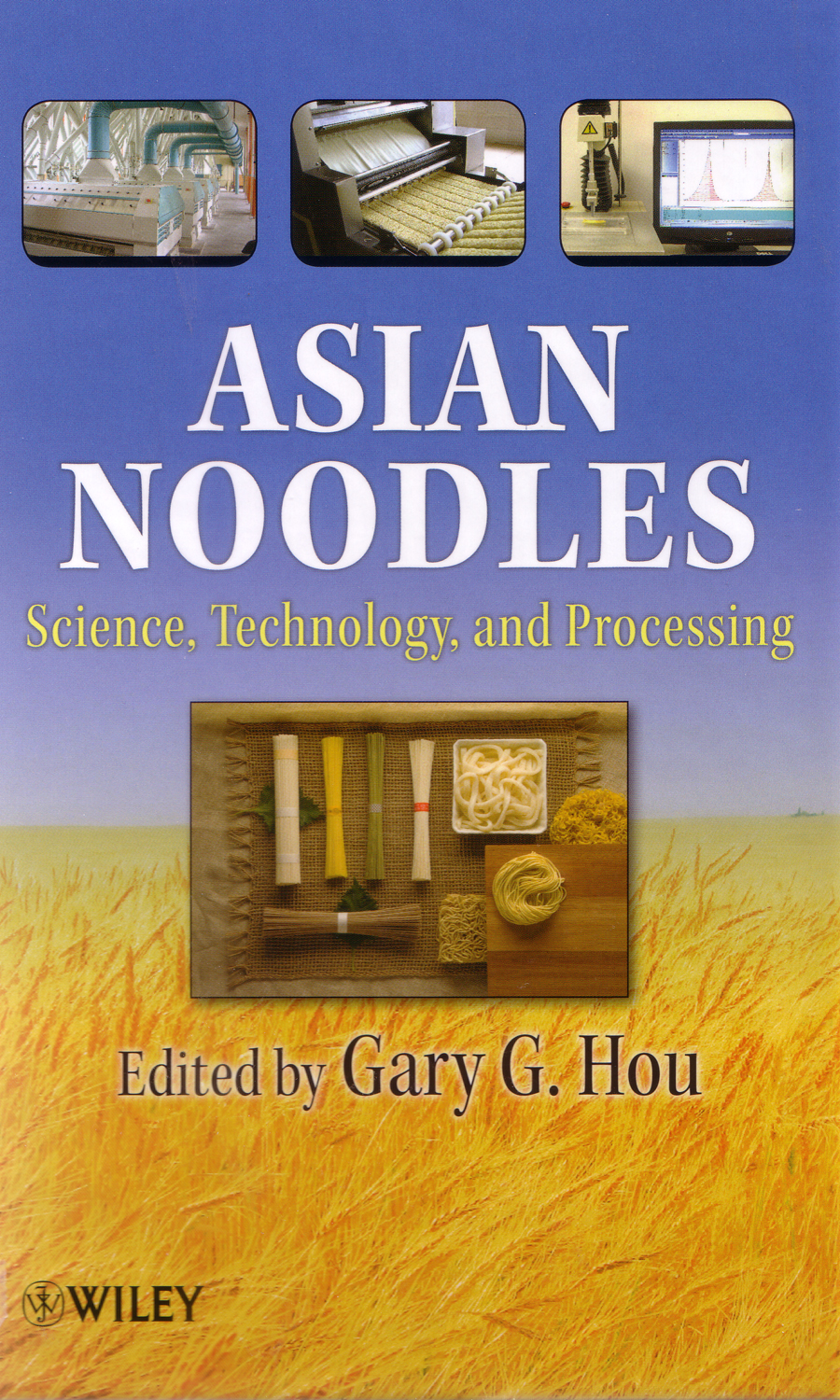|
Read 13019375 times
Connect me to:
|
Asian Noodles (edited by Hou)by: Gary G. Hou, editor
Hoboken NJ:
John Wiley & Sons, Inc. 2010, Hardbound
ISBN: 978-0-470-17922-2
Reviewed by: Jacqueline M. Newman
Summer Volume: 2011 Issue: 18(2) page(s): 20 and 21
 Subtitled: Science, Technology, and Processing, finally a volume offering comprehensive cutting edge information from breeding the wheat to eating noodle products. Its sixteen chapters by a couple of dozen authors unravel differences in Asian noodles made from a variety of flours including wheat flour, rice flour, buckwheat flour, and from the starches of these four flours and the starches of mung bean, tapioca, sweet potato, sago, and corn, to name but a few others. Subtitled: Science, Technology, and Processing, finally a volume offering comprehensive cutting edge information from breeding the wheat to eating noodle products. Its sixteen chapters by a couple of dozen authors unravel differences in Asian noodles made from a variety of flours including wheat flour, rice flour, buckwheat flour, and from the starches of these four flours and the starches of mung bean, tapioca, sweet potato, sago, and corn, to name but a few others.
Begin learning that in nine Asian countries, noodle consumption uses downward from fifty to twenty-one percent of their total flour usage. In China, it is forty percent, in Taiwan thirty-eight percent; and many other Asian countries rely heavily on wheat imports, as do the two mentioned. Also learn that China is the largest wheat producer and consumer in the world, it is their third leading grain crop (after rice and maize), and that five of their provinces produce seventy percent of it. Various wheat products are consumed in China, and if you wondered which and how much of each, learn that steamed and flat breads make up forty-five percent, noodles and dumplings forty percent, cakes and cookies ten percent, and Western breads, five percent. The editor of this volume is from the Wheat Marketing Center of Portland Oregon, his co-contributors from Asia and the Western world. Two chapters about objective and sensory evaluation of noodles are outstanding. They discuss noodle color, appearance, texture, how noodles are classified, their quality characteristics, and sensory tests used for color and texture, among other things. They and the chapter about instant noodle seasonings are eye openers. The latter's table of dry noodle soup packages called ramen is an eye-opener of twenty-five ingredients used before even mentioning flavorings and colorings. A technical tome, the only things missing are recipes and suggestions about how to best use Asian noodles. Considering their extensive use in Asia, that would need another four hundred pages, at least. |

 Subtitled: Science, Technology, and Processing, finally a volume offering comprehensive cutting edge information from breeding the wheat to eating noodle products. Its sixteen chapters by a couple of dozen authors unravel differences in Asian noodles made from a variety of flours including wheat flour, rice flour, buckwheat flour, and from the starches of these four flours and the starches of mung bean, tapioca, sweet potato, sago, and corn, to name but a few others.
Subtitled: Science, Technology, and Processing, finally a volume offering comprehensive cutting edge information from breeding the wheat to eating noodle products. Its sixteen chapters by a couple of dozen authors unravel differences in Asian noodles made from a variety of flours including wheat flour, rice flour, buckwheat flour, and from the starches of these four flours and the starches of mung bean, tapioca, sweet potato, sago, and corn, to name but a few others.